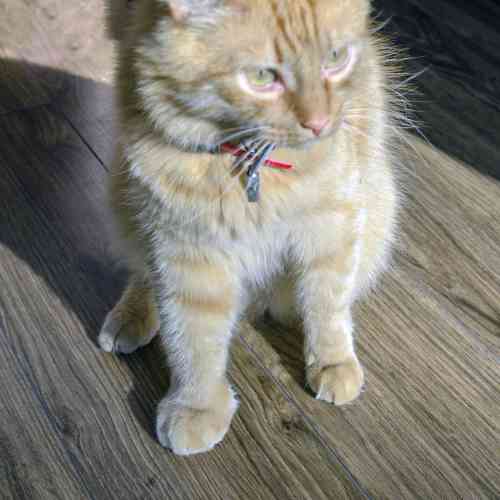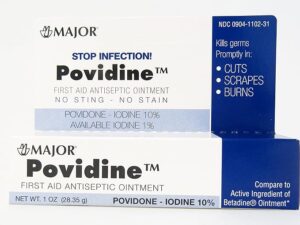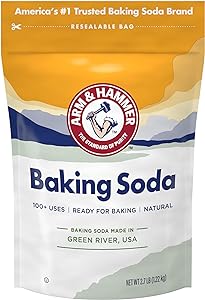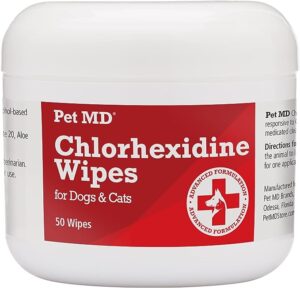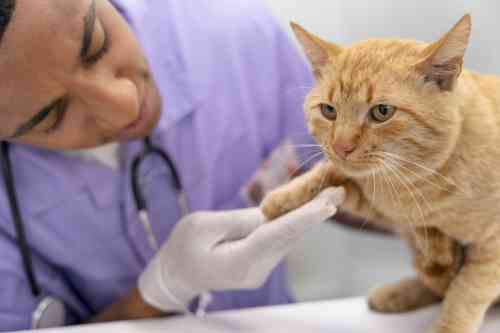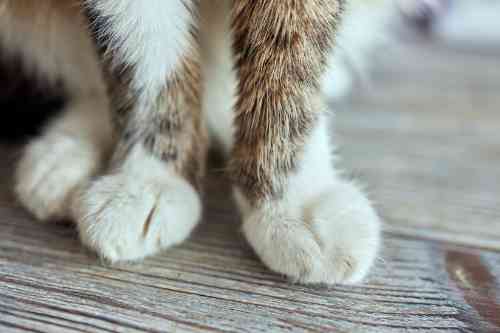Your cat has an infected paw
How do you treat this yourself?
It’s a bummer that your cat has an infected paw. On this page, you will learn how to recognize an infected paw, what could be the cause, and what you can do yourself to heal your cat’s infected paw. We also tell you when you should take your cat with an infected paw to the vet and what the vet might do to treat it. Good luck in healing your cat’s infected paw. In your hands, they’ll receive the tender-loving-care they deserve.
How do you recognise an infected paw in your cat?
The symptoms you notice in your cat when it has an infection in its paw is generally quite easy to recognise.
- Your cat limps
- Their paw hurts when you try to touch or examine it
- Your cat excessively licks its paw
- Your cat’s paw may be swollen
- There may be a wound on your cat’s paw
- The skin of your cat’s paw may appear red
- Your cat’s paw feels warmer than its healthy paws
- Pus may come out of the skin on their paw, sometimes mixed with blood
- Your cat can have a fever
- Your cat may feel ill due to fever
- Your cat may not want to eat due to fever
There is a difference between inflammation and infection. Inflammation is the body’s way of clearing up damaged tissue. Infection is caused by a bacteria, virus, or parasite. If an infection has occurred, there is always tissue damage and thus inflammation. But conversely, an inflamed paw in your cat doesn’t always mean there is also an infection. However, this is usually the case. Hence, it can sometimes be confusing, these two terms.
Causes of an infected paw in your cat
Abscess most common cause of an infected paw in your cat
In about 95% of the cases, the cause of an infected paw in your cat is an abscess. In this case, your cat has sustained a puncture wound where a bacteria has entered under their skin. This usually happens in a fight with another cat, where a nail or tooth has pierced your cat’s skin. But a twig can also be the cause, or your cat might have scratched itself too hard. In any case, the bacteria finds it warm and moist under the skin — an ideal place to multiply.
But your cat’s body disagrees. It sends all sorts of pus cells to clear up these bacteria. Sometimes it succeeds, and then you notice nothing further. But sometimes those bacteria multiply very hard. Then more and more pus cells have to come to that spot. They then all accumulate under the skin, where the bacteria was. This forms a cavity filled with pus and bacteria. That is an abscess.
This abscess is an infection resulting in a very painful inflammation in your cat’s paw. After about 2-3 days, this abscess bursts open through the skin, and all the pus, along with some blood and bacteria, comes out. It often looks dramatic, and an owner may panic. But the good news is that your cat experiences much less pain because the pressure is off. They’ll lick it clean over the next few days, but they probably won’t be in much pain.
Skin infections
Above, we talked about an abscess. This infection was under the skin. In this case, we are talking about an infection of the skin itself. This usually occurs because your cat has suffered a graze or has been licking its own paw so much that the top layer of the skin has been damaged. This wound can then become infected with normal skin bacteria, which are always present on the body of your healthy cat. And here too, the wound is pleasantly warm and moist. Bacteria love this! They multiply and thus cause a skin infection. This can also grow quite quickly over the paw. It’s painful for your cat, but not as painful as an abscess.
Inflamed footpads
When the infected paw in your cat mainly takes place at the bottom of its foot, they probably have one or more inflamed footpads. This doesn’t happen very often in cats, but we see it occasionally. The cause can be a small wound, for example, from a shard on the street. Or your cat has developed cracks in its paw pads from walking too much over a salted road in freezing temperatures. In these wounds, bacteria can settle and thus cause a wound infection. But this time in the footpads, causing them to become inflamed.
Bruising can also be reason for an infected paw in your cat
If your cat has had an accident and injured its paw, internal damage can also occur to its muscles or tendons. This damage must be cleared in order to use the paw properly again. In this case, an inflammation occurs in your cat’s paw. There is no infection, as no bacterium, virus, or parasite has penetrated your cat’s paw. With a bruise, you often see nothing externally on the skin. But it can be quite painful for your cat. Usually, your cat does not have a fever from it and is therefore still active and eats well. They may walk a bit limpingly.
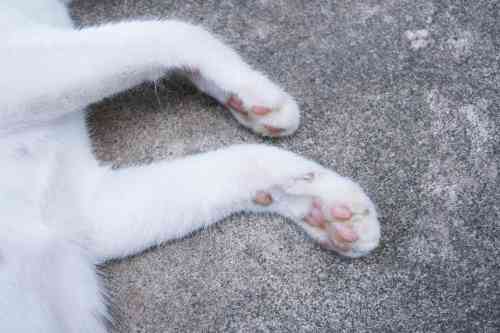
The infected paw of your cat smells
In case the infected paw of your cat smells, then a bacterium is involved. Bacteria produce certain substances that are gasified and can cause a terrible stench. In most cases, an abscess is the cause of an infected paw in your cat that smells so extremely, but a skin infection also smells.
What can you do yourself about an infected paw in your cat?
Of course, this depends on the cause of the infected paw in your cat. We explain per cause what you can do yourself to treat it.
Treatment of an abscess
An abscess is difficult to treat when it is still closed. If you want to do something about it quickly, it is best to go to your vet. They can open the abscess and give your cat antibiotics and painkillers. However, an abscess will also open by itself after about 2-3 days. So, if your cat is not suffering too much, you can wait until the abscess opens. Once this happens, you should massage the abscess 3 times a day from the side to the opening. With this you need to empty the abscess as much as possible. Get as much gunk out as you cas. Then you can drop some betadine solution into the opening of the abscess. Do this for 5 days. After that, the problem should be over.
Treatment of a skin infection
When there is a skin infection, the bacteria luckily is not too deep. So, it’s easier to deal with than in the case of an abscess. In this case, it is best to use honey ointment. This prevents bacterial growth so that the skin infection on your cat’s paw can heal. Apply this yourself 3 times a day on the skin inflammation. It’s important to smear it well, especially on the edges of the skin inflammation. After 5-7 days, the skin inflammation should be under control.
Treatment of inflamed pads
If your cat has inflamed pads, it’s best to soak their paw twice a day for 5 minutes in a bath of soda solution. This solution seeps well into all nooks and crannies, and will kill the bacteria, allowing the pad to heal. You should do this for 5-7 days. But, of course, not every cat will sit for 5 minutes in a tub of soap with its paw. In that case, you can clean its foot very well twice a day with Chlorhexidine wipes. Make sure you get into all the crevices!
Treatment of a bruise
A bruise as a cause for an infected paw in your cat usually resolves itself in most cases. This can sometimes take 2 weeks. You should see a little improvement every day. You can promote healing by limiting your cat’s movement. So, less playing and preferably not going outside. Additionally, heat helps improve blood circulation. This expands the blood vessels, bringing more healing substances to the bruise in the paw and allowing damaged tissue to be removed more easily. The recovery then goes faster. You can support the healing of your cat’s infected paw by regularly placing a warm cherry pit cushion against it while your cat is resting.
When do you go to the vet?
If your cat is in a lot of pain or looks sick, you should ensure that a veterinarian examines its infected paw. In most cases, your veterinarian will only perform a physical examination on your cat. But sometimes further examination is necessary, for example, in the form of an X-ray. This will, of course, be discussed with you as the owner.
What treatment does your veterinarian give to your cat if it has an infected paw
There are basically different possibilities. Superficial infections that have caused an infected paw in your cat will be treated with an antibiotic ointment. If the infection is deeper in or under the skin, an oral form of antibiotics is chosen. This means that your cat must take the antibiotics through its mouth.
Additionally, a painkiller is often given. This not only reduces pain in your cat but is also an anti-inflammatory and fever reducer. Very useful if, for example, your cat has an abscess and doesn’t want to eat.
How to prevent an infected paw in your cat?
Preventing an infected paw in your cat is almost impossible. At least, not the initial cause. You can hardly prevent your cat from getting involved in a fight or an accident. However, if you notice a wound on them, it’s wise to apply iodine ointment to it. This ointment should also be part of your cat’s first aid kit. By treating every wound your cat sustains with iodine ointment, you reduce the chance of developing an infection. In this way, you can somewhat prevent your cat from getting an infected paw.
Good luck to your cat with its infected paw!

